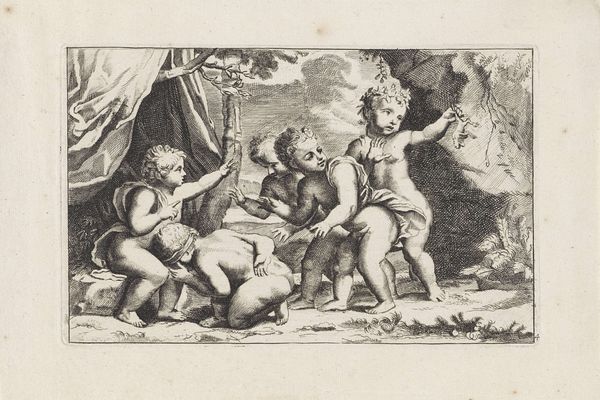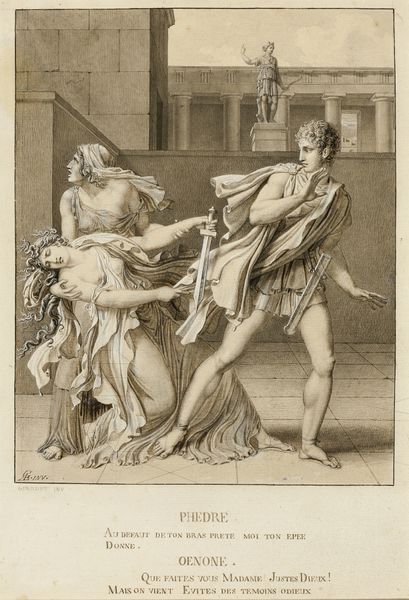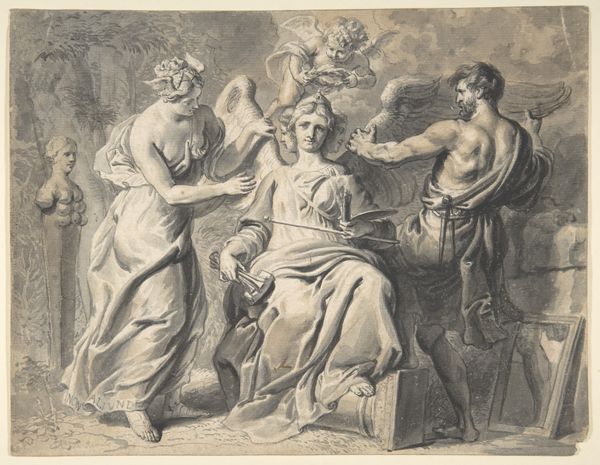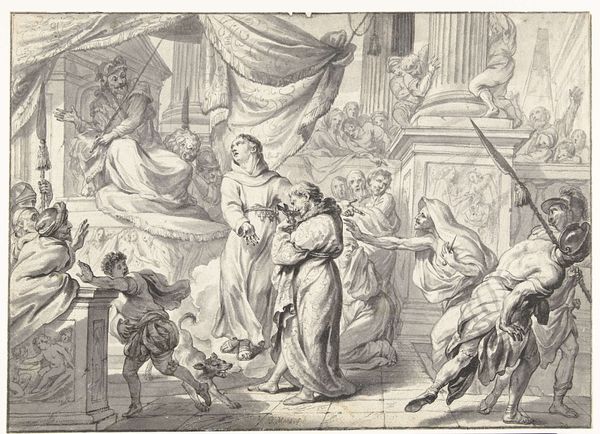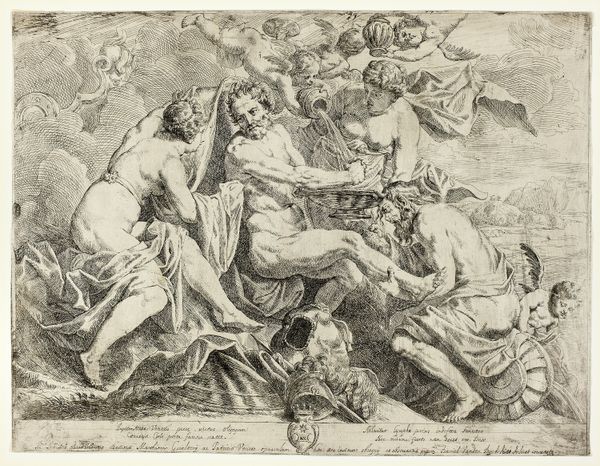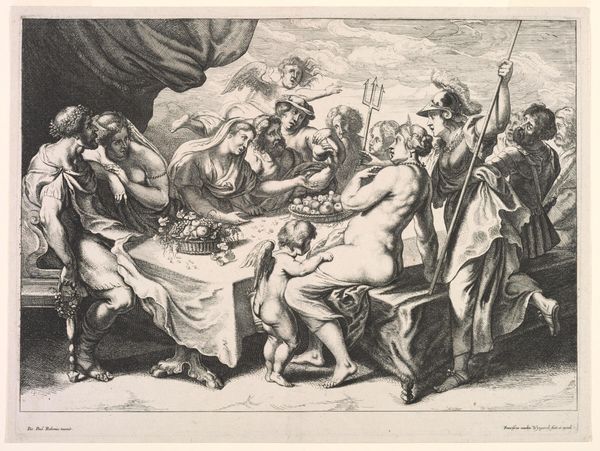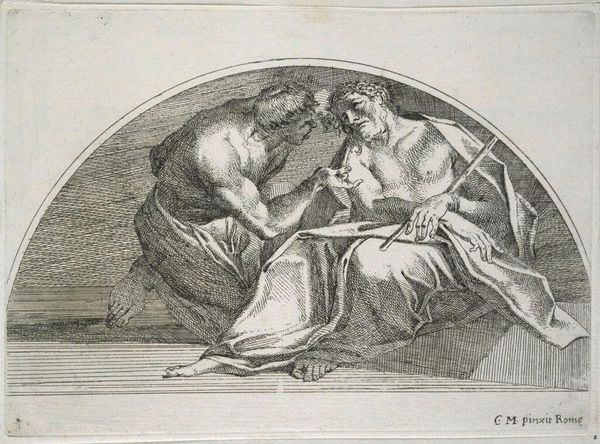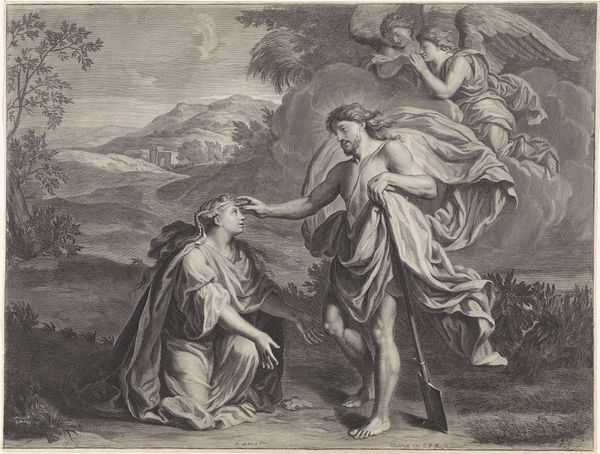
Vrouw en twee putti met een blad waarop de vrijheidshoed op een lans 1751 - 1816
0:00
0:00
reiniervinkeles
Rijksmuseum
print, paper, engraving
#
neoclacissism
#
allegory
# print
#
figuration
#
paper
#
line
#
engraving
Dimensions: height 76 mm, width 129 mm
Copyright: Rijks Museum: Open Domain
Curator: This delicate print, residing here at the Rijksmuseum, is titled "Vrouw en twee putti met een blad waarop de vrijheidshoed op een lans," which translates to "Woman and two putti with a sheet depicting the liberty cap on a lance." The artist is Reinier Vinkeles, and while the precise creation date is unknown, it falls sometime between 1751 and 1816. What springs to mind for you as you gaze upon it? Editor: It feels like a fleeting dream, all soft lines and suggestive symbolism. Like a snippet of revolutionary propaganda beamed directly from someone's subconscious. Is that woman blowing a trumpet, or calling for revolution with a vuvuzela from ancient Greece? Curator: That's a lovely way of putting it. The print employs Neoclassical allegories – we see the idealized female figure symbolizing freedom, attended by putti. The liberty cap on a lance was a popular symbol of revolutionary ideals. I understand it would evoke dreams with its ethereal setting. Editor: Ethereal is the word. Everything fades into everything else. Those wispy clouds and how they're echoed in the woman’s drapery… even the fine lines seem to breathe into each other. But who’s idea was to depict liberty with cherubic toddlers? Was freedom meant to be this cuddly and innocent? Curator: It was, and remains, very common practice in Europe to utilize this symbolism. The putti offer an interesting point though, as they may reflect more the promise of a freer future, a hope vested in a new generation following revolution. The figure blowing the trumpet is also an element that further drives that symbolism and message. Editor: You know, looking closer at the sheet itself, I wonder: is this print more about the *idea* of freedom, neatly framed and presented, than the messy reality of fighting for it? A pretty package that conveniently sidesteps all the blood and ugliness? Curator: Precisely. It's vital to remember the socio-political context. Prints like these were powerful tools for disseminating information and shaping public opinion during times of upheaval. There's often a considerable distance between that message and the truth. Editor: So much to unpack in this deceptively simple scene! Suddenly the cuddly toddlers aren't so innocent. Thank you for opening my eyes. Curator: My pleasure! There is indeed always much more beneath the surface in a seemingly simple work. Thank you for joining me in that analysis.
Comments
No comments
Be the first to comment and join the conversation on the ultimate creative platform.

